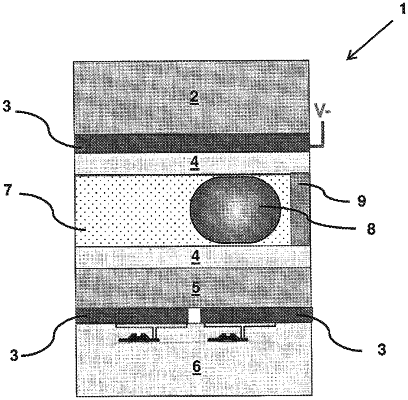| CPC B01L 3/502792 (2013.01) [B01L 3/502715 (2013.01); B01L 3/502723 (2013.01); B01L 2200/027 (2013.01); B01L 2200/0605 (2013.01); B01L 2200/0642 (2013.01); B01L 2200/0673 (2013.01); B01L 2200/0684 (2013.01); B01L 2300/0809 (2013.01); B01L 2300/0816 (2013.01); B01L 2300/0864 (2013.01); B01L 2300/165 (2013.01); B01L 2400/0406 (2013.01); B01L 2400/0427 (2013.01)] | 14 Claims |

|
1. A method of loading an electro-wetting on dielectric (EWOD) device with an assay fluid comprising:
providing the EWOD device, wherein the EWOD device comprises:
first and second substrates spaced from one another by a spacer and a fluid barrier, the EWOD device further including side walls and the first substrate being an upper substrate and the second substrate being a lower substrate such that the first and second substrates and the side walls define a chamber therebetween; and
a plurality of ports that permit introduction of fluid into the chamber and/or displacement of fluid from the chamber;
the chamber including a vent area containing a venting fluid and an active area for carrying out an assay, and the plurality of ports includes at least one input port, a first vent port located in the vent area, and a second vent port located in the active area; and
the method further comprising:
introducing a filler fluid into the active area of the chamber through one or more of the plurality of ports, filling the active area of the chamber with the filler fluid; and
introducing a volume of the assay fluid into the chamber through the at least one input port, wherein a portion of the venting fluid vents through the first vent port and a portion of the filler fluid is displaced into the second vent port upon entry of the volume of the assay fluid into the chamber.
|